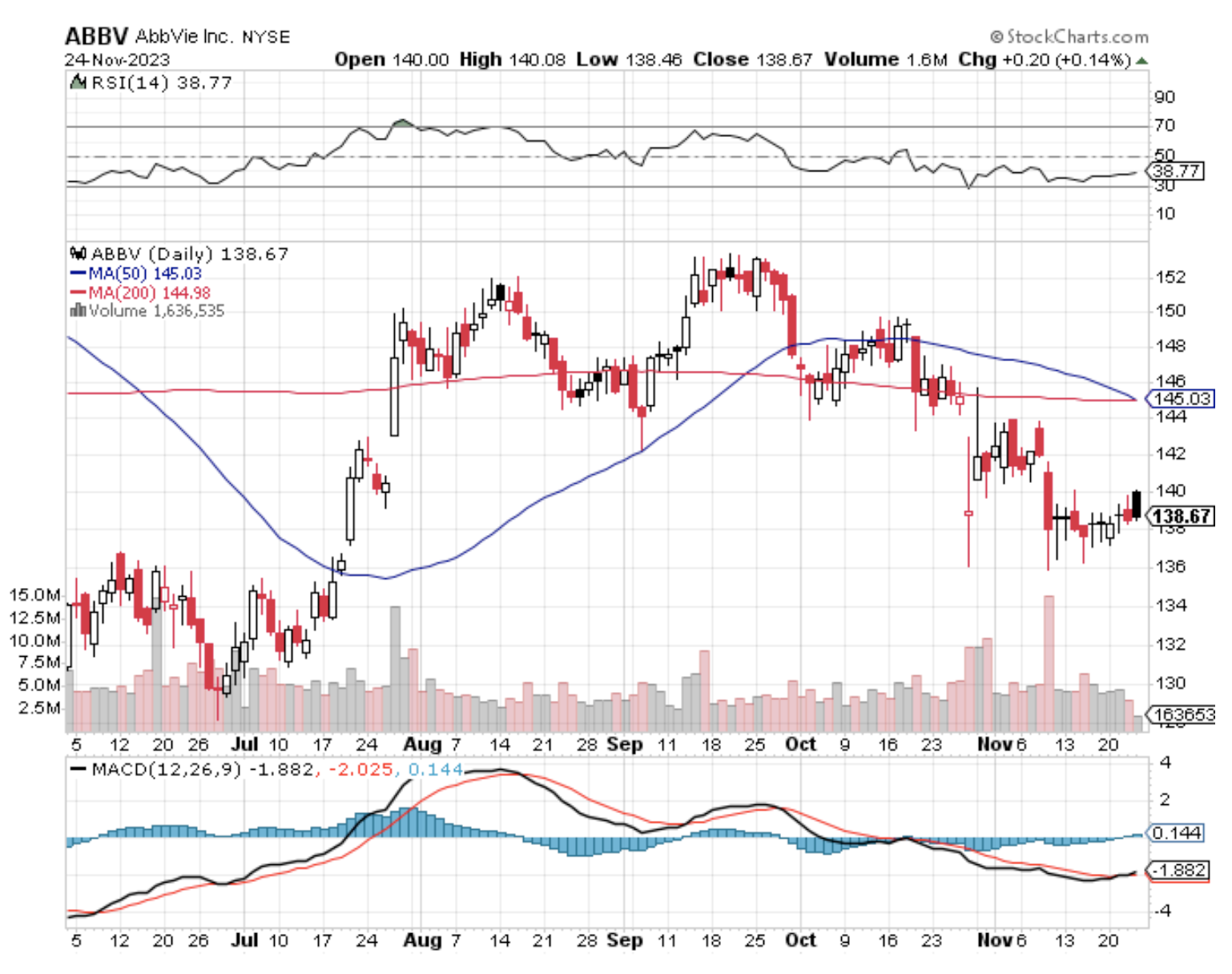In the high-stakes game of investment, where the dream is to turn a modest sum into a cool million, savvy players are constantly on the hunt for that one stock with the Midas touch.
Enter the scene: AbbVie (ABBV), a heavyweight in the healthcare arena, boasts a revenue growth of over $20 billion since 2019.
Let's cut through the noise and see if AbbVie is the golden goose for your portfolio, capable of outpacing the market and padding your account with those sought-after seven figures.
Since its spinoff from Abbott Labs (ABT) in 2013, AbbVie has been flexing its muscles in the dividend world.
I’m not talking about just keeping up with the Joneses here; AbbVie's dividend payout has skyrocketed by an impressive 270% through late 2023. This isn't just inheritance; it's multiplication.
Now, let's address the elephant in the room: Humira, AbbVie’s blockbuster drug, which is set to lose its patent shield in 2023.
This anti-inflammatory drug has been a cash cow for AbbVie, spanning a wide range of treatments from rheumatoid arthritis to Crohn's disease. But the party can't last forever. As the patent protection fades, so does a chunk of AbbVie’s revenue stream.
However, don't think AbbVie's been caught off guard. They've been prepping for this moment with Rinvoq and Skyrizi, two new immunology drugs poised to pick up the slack and maybe, just maybe, outshine their predecessor by 2027.
Dig into the latest quarter, and you'll find Rinvoq and Skyrizi raking in the cash with double-digit sales growth, eyeing to breach the $11 billion mark in annual revenue.
AbbVie's strategy? Cover all bases Humira did, and then some.
But that's not all in AbbVie's arsenal. With over 50 programs chugging along in development, the odds are in favor of a few big wins that could give the biopharma top and bottom lines a healthy boost.
Besides the promising Rinvoq and Skyrizi, AbbVie has other aces up its sleeve. Take bipolar disorder treatment Vraylar, with its potential to hit $4 billion in peak annual revenue, or acute migraine drug Ubrelvy, eyeing at least $1 billion.
While transition phases are tricky, especially since AbbVie's shift from Humira to the likes of Skyrizi and Rinvoq is no walk in the park, it's the other elements in play that add to AbbVie's potential.
For instance, here's another factor that makes the company attractive for growth investors: AbbVie's stock is currently undervalued, trading at a mere 12 times its estimated future earnings, a bargain compared to the sector's average. This could be your ticket to get on board for the long haul, eyeing those hefty returns down the road.
Now, what about the financials? After all, a company's muscle is measured by its monetary might. Well, AbbVie's operating profit of $15.8 billion on $55.1 billion in revenue in the past 12 months is nothing to sneeze at.
Now, let's talk free cash flow (FCF) – aka the real indicator of financial fitness. AbbVie's sitting pretty with $24.7 billion in FCF over four quarters. That's not pocket change; it's a war chest, part of which is already earmarked for a generous 4.5% dividend yield.
So, is AbbVie the magic bean that grows into a million-dollar beanstalk? Let’s give it more context.
To morph a $30,000 investment into $1 million, AbbVie's market cap would need to balloon over 30 times its current size, a Herculean feat that translates to a market valuation of over $7.3 trillion.
It's a long shot but not beyond the realms of possibility, especially considering the long-run average return of the S&P 500.
Overall, AbbVie is more than just a contender in the investment arena. With its solid track record, robust pipeline, and undervalued stock, it's a heavyweight with a puncher's chance of turning your investment into a million-dollar dream. I suggest you buy the dip.

